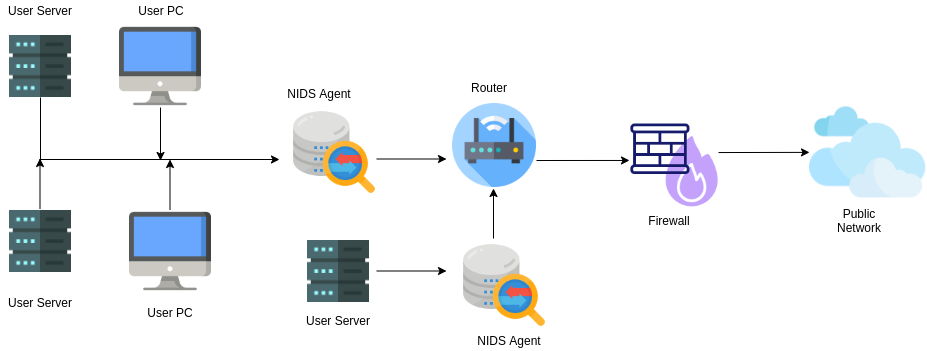
Cyberattacks Detection in IoT-based Smart City Network Traffic
Last Updated on November 24, 2021 by Editorial Team
Author(s): Abhinav Dubey
Originally published on Towards AI the World’s Leading AI and Technology News and Media Company. If you are building an AI-related product or service, we invite you to consider becoming an AI sponsor. At Towards AI, we help scale AI and technology startups. Let us help you unleash your technology to the masses.
Machine Learning
In this article, different machine learning and deep learning models have been used for the classification of cyberattacks such as DoS, Worms, Backdoor, and many more attacks from normal network traffic and network intrusion detection. UNSW-NB15 Dataset has been used to train the ML and DL models. You can find the complete code, trained models, plots, datasets, preprocessed files here on my GitHub account.

The whole idea of the Internet of Things is to extend the capability of the Internet beyond computers and smartphones to electronic, mechanical devices, sensors, etc. With the increasing number of use cases of IoT devices, security vulnerabilities have been also increased drastically.
Today IoT devices are used in fire systems, drones, smart homes, healthcare are just to name a few. You can imagine what a disaster it would be if someone with bad intent gets access to these systems. That’s why Network Intrusion Detection System (NIDS) is installed, which analyzes all the traffic and detects malicious traffic, and helps the organization monitor their cloud, on-premise, or hybrid infrastructure.
Dataset
The Pcap files (raw network packets) were created at the Cyber Range Lab of the Australian Centre for Cyber Security (ACCS) using the IXIA PerfectStorm tool.
The dataset is officially available at the University of New South Wales website https://research.unsw.edu.au/projects/unsw-nb15-dataset
- UNSW_NB15.csv — Original Dataset
- UNSW_NB15_features.csv — 49 features with the class label. These features are described in the UNSW-NB15_freatures.csv file.
- bin_data.csv — Processed CSV Dataset file for Binary Classification
- multi_data.csv — Processed CSV Dataset file for Multi-class Classification
Machine Learning Models used
- Decision Tree Classifier
- K-Nearest-Neighbor Classifier
- Linear Regression Model
- Linear Support Vector Machine
- Logistic Regression Model
- Multi-Layer Perceptron Classifier
- Random Forest Classifier
Data Preprocessing
- Dataset had 45 attributes and 175341 rows.
- After dropping null values Dataset had 45 attributes and 81173 rows.
- The data type of attributes is converted using provided data type information from the features dataset.
One-hot Encoding
- Categorical Columns ‘proto’, ‘service’, ‘state’ are one-hot-encoded using
pd.get_dummies() and these 3 attributes are removed afterward. - data_cat Dataframe had 19 attributes after one-hot-encoding.
- data_cat is concatenated with the main data dataframe.
- Total attributes of data dataframe — 61
Data Normalization
- 58 Numeric Columns of DataFrame are scaled using MinMax Scaler in the range 0 to 1.
Preparing for Binary Classification
- A copy of DataFrame is created for Binary Classification.
- ‘label’ attribute is classified into two categories ‘normal’ and ‘abnormal’.
- ‘label’ is encoded using LabelEncoder(), corresponding encoded labels (0,1) are saved in the ‘label’ column itself.
- Binary dataset — 81173 rows, 61 columns

Preparing for Multi-class Classification
- A copy of DataFrame is created for Multi-class Classification.
- ‘attack_cat’ attribute is classified into 9 categories ‘Analysis’, ‘Backdoor’, ‘DoS’, ‘Exploits’, ‘Fuzzers’, ‘Generic’, ‘Normal’, ‘Reconnaissance’, ‘Worms’.
- attack_cat is encoded using LabelEncoder(), corresponding encoded labels (0,1,2,3,4,5,6,7,8) are saved in the label attribute.
- attack_cat is one-hot encoded.
- Multi-class Dataset — 81173 rows, 69 columns

Feature Selection
- No. of attributes of ‘bin_data’ — 61
- No. of attributes of ‘multi_data’ — 69
- The Pearson Correlation Coefficient method is used for feature extraction.
- The attributes with more than 0.3 correlation coefficient with the target attribute label were selected.

- No. of attributes of ‘bin_data’ after feature selection — 15
- ‘rate’, ‘sttl’, ‘sload’, ‘dload’, ‘ct_srv_src’, ‘ct_state_ttl’, ‘ct_dst_ltm’, ‘ct_src_dport_ltm’, ‘ct_dst_sport_ltm’, ‘ct_dst_src_ltm’, ‘ct_src_ltm’, ‘ct_srv_dst’, ‘state_CON’, ‘state_INT’, ‘label’.
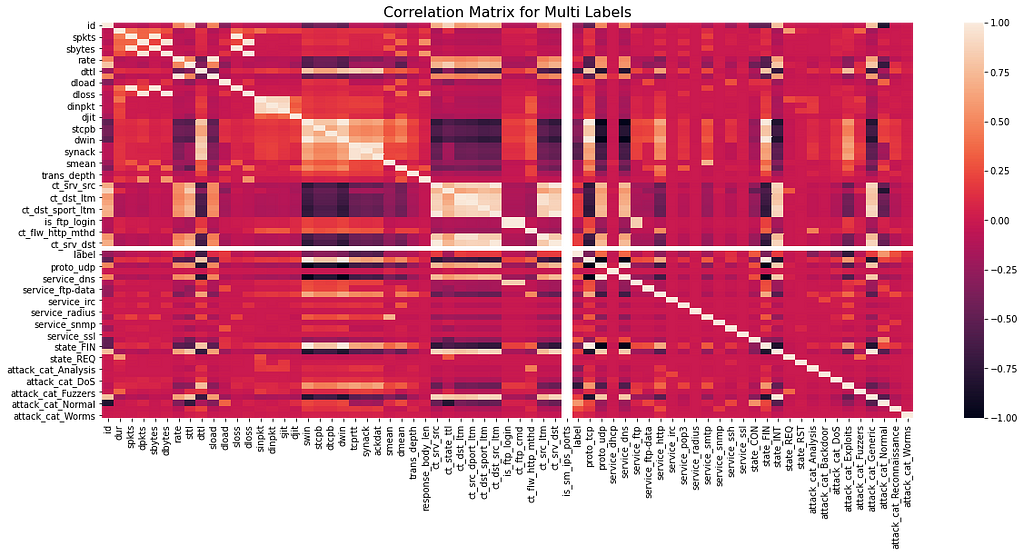
- No. of attributes of ‘multi_data’ after feature selection — 16
- ‘dttl’, ‘swin’, ‘dwin’, ‘tcprtt’, ‘synack’, ‘ackdat’, ‘label’, ‘proto_tcp’, ‘proto_udp’, ‘service_dns’, ‘state_CON’, ‘state_FIN’, ‘attack_cat_Analysis’, ‘attack_cat_DoS’, ‘attack_cat_Exploits’, ‘attack_cat_Normal’.
Splitting Dataset into Training and Testing
- Randomly splitting the bin_data in 80% for training and 20% for testing.
- Randomly splitting the multi_data in 70% for training and 30% for testing.
- Target feature — label
Decision Tree Classifier
Binary Classification
- Accuracy — 98.09054511857099
- Mean Absolute Error — 0.019094548814290114
- Mean Squared Error — 0.019094548814290114
- Root Mean Squared Error — 0.13818302650575473
- R2 Score — 89.55757103838098
DecisionTreeClassifier(ccp_alpha=0.0, class_weight=None, criterion=’gini’, max_depth=None, max_features=None, max_leaf_nodes=None, min_impurity_decrease=0.0, min_impurity_split=None, min_samples_leaf=1, min_samples_split=2, min_weight_fraction_leaf=0.0, presort=’deprecated’, random_state=123, splitter=’best’)
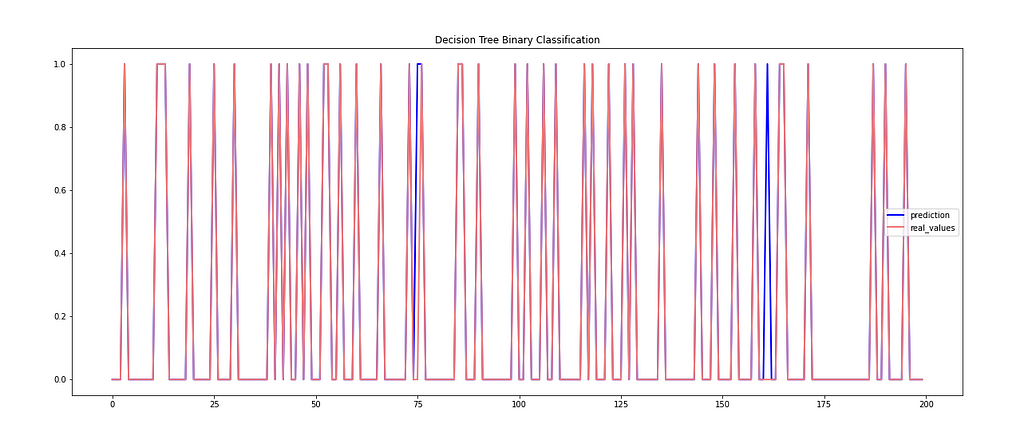
Multi-class Classification
- Accuracy — 97.19940867279895
- Mean Absolute Error — 0.06800262812089355
- Mean Squared Error — 0.20532194480946123
- Root Mean Squared Error — 0.4531246459965086
- R2 Score — 86.17743099336013
DecisionTreeClassifier(ccp_alpha=0.0, class_weight=None, criterion=’gini’, max_depth=None, max_features=None, max_leaf_nodes=None, min_impurity_decrease=0.0, min_impurity_split=None, min_samples_leaf=1, min_samples_split=2, min_weight_fraction_leaf=0.0, presort=’deprecated’, random_state=123, splitter=’best’)
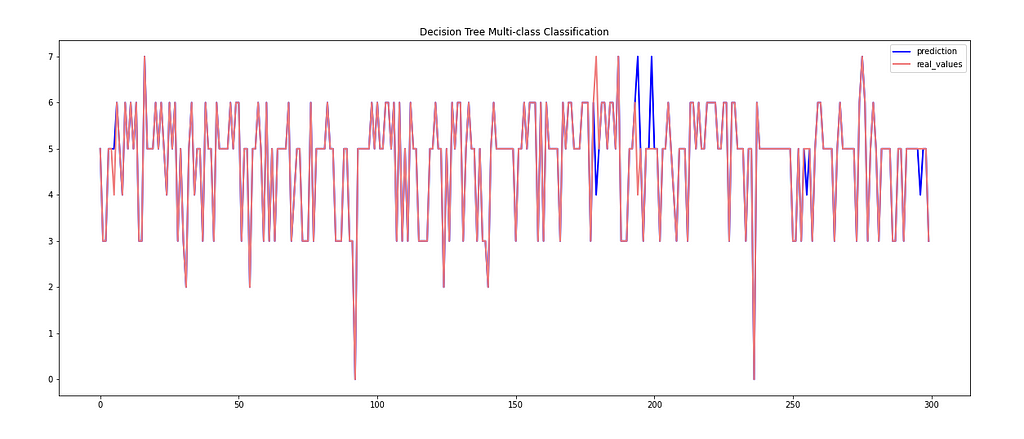
K-Nearest Neighbor Classifier
Binary Classification
- Accuracy — 98.3061287342162
- Mean Absolute Error — 0.016938712657838004
- Mean Squared Error — 0.016938712657838004
- Root Mean Squared Error — 0.13014880966738807
- R2 Score — 90.74435871039374
KNeighborsClassifier(algorithm=’auto’, leaf_size=30, metric=’minkowski’, metric_params=None, n_jobs=None, n_neighbors=5, p=2, weights=’uniform’)

Multi-class Classification
- Accuracy — 97.36777266754271
- Mean Absolute Error — 0.06508705650459921
- Mean Squared Error — 0.19411136662286466
- Root Mean Squared Error — 0.44058071521897624
- R2 Score — 86.92848100772136
KNeighborsClassifier(algorithm=’auto’, leaf_size=30, metric=’minkowski’, metric_params=None, n_jobs=None, n_neighbors=5, p=2, weights=’uniform’)
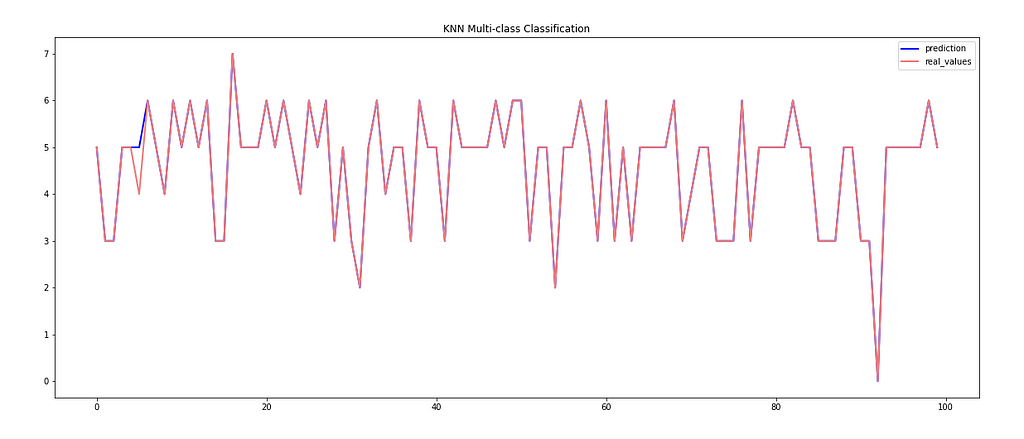
Linear Regression Model
Binary Classification
- Accuracy — 97.80720665229443
- Mean Absolute Error — 0.021927933477055742
- Mean Squared Error — 0.021927933477055742
- Root Mean Squared Error — 0.1480808342664767
- R2 Score — 88.20923868071647
LinearRegression(copy_X=True, fit_intercept=True, n_jobs=None, normalize=False)

Multi-class Classification
- Accuracy — 95.12976346911958
- Mean Absolute Error — 0.06824901445466491
- Mean Squared Error — 0.12146846254927726
- Root Mean Squared Error — 0.3485232596962178
- R2 Score — 91.82055676180129
LinearRegression(copy_X=True, fit_intercept=True, n_jobs=None, normalize=False)

Linear Support Vector Machine
Binary Classification
- Accuracy — 97.85032337542347
- Mean Absolute Error — 0.021496766245765322
- Mean Squared Error — 0.021496766245765322
- Root Mean Squared Error — 0.1466177555610688
- R2 Score — 88.45167193436498
SVC(C=1.0, break_ties=False, cache_size=200, class_weight=None, coef0=0.0, decision_function_shape=’ovr’, degree=3, gamma=’auto’, kernel=’linear’, max_iter=-1, probability=False, random_state=None, shrinking=True, tol=0.001, verbose=False)
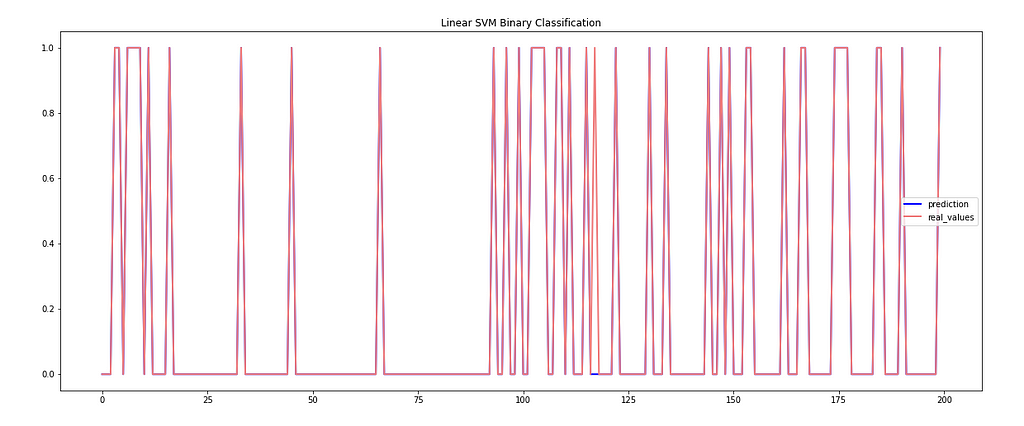
Multi-class Classification
- Accuracy — 97.59362680683311
- Mean Absolute Error — 0.059912943495400786
- Mean Squared Error — 0.17941031537450722
- Root Mean Squared Error — 0.42356854861345317
- R2 Score — 87.93449282205455
SVC(C=1.0, break_ties=False, cache_size=200, class_weight=None, coef0=0.0, decision_function_shape=’ovr’, degree=3, gamma=’auto’, kernel=’linear’, max_iter=-1, probability=False, random_state=None, shrinking=True, tol=0.001, verbose=False)

Logistic Regression Model
Binary Classification
- Accuracy — 97.80104712041884
- Mean Absolute Error — 0.02198952879581152
- Mean Squared Error — 0.02198952879581152
- Root Mean Squared Error — 0.1482886671186019
- R2 Score — 88.17947258428785
LogisticRegression(C=1.0, class_weight=None, dual=False, fit_intercept=True, intercept_scaling=1, l1_ratio=None, max_iter=5000, multi_class=’auto’, n_jobs=None, penalty=’l2', random_state=123, solver=’lbfgs’, tol=0.0001, verbose=0, warm_start=False)

Multi-class Classification
- Accuracy — 97.58952036793693
- Mean Absolute Error — 0.060077201051248356
- Mean Squared Error — 0.18056011826544022
- Root Mean Squared Error — 0.42492366169165047
- R2 Score — 87.87674567880146
LogisticRegression(C=1.0, class_weight=None, dual=False, fit_intercept=True, intercept_scaling=1, l1_ratio=None, max_iter=5000, multi_class=’multinomial’, n_jobs=None, penalty=’l2', random_state=123, solver=’newton-cg’, tol=0.0001, verbose=0, warm_start=False)

Multi-Layer Perceptron Classifier
Binary Classification
- Accuracy — 98.36772405297197
- Mean Absolute Error — 0.01632275947028026
- Mean Squared Error — 0.01632275947028026
- Root Mean Squared Error — 0.12776055522061674
- R2 Score — 91.10646238100463
MLPClassifier(activation=’relu’, alpha=0.0001, batch_size=’auto’, beta_1=0.9, beta_2=0.999, early_stopping=False, epsilon=1e-08, hidden_layer_sizes=(100,), learning_rate=’constant’, learning_rate_init=0.001, max_fun=15000, max_iter=8000, momentum=0.9, n_iter_no_change=10, nesterovs_momentum=True, power_t=0.5, random_state=123, shuffle=True, solver=’adam’, tol=0.0001, validation_fraction=0.1, verbose=False, warm_start=False)

Multi-class Classification
- Accuracy — 97.54434954007884
- Mean Absolute Error — 0.06065210249671485
- Mean Squared Error — 0.17858902759526937
- Root Mean Squared Error — 0.4225979502970517
- R2 Score — 87.97913543550516
MLPClassifier(activation=’relu’, alpha=0.0001, batch_size=’auto’, beta_1=0.9, beta_2=0.999, early_stopping=False, epsilon=1e-08, hidden_layer_sizes=(100,), learning_rate=’constant’, learning_rate_init=0.001, max_fun=15000, max_iter=8000, momentum=0.9, n_iter_no_change=10, nesterovs_momentum=True, power_t=0.5, random_state=123, shuffle=True, solver=’adam’, tol=0.0001, validation_fraction=0.1, verbose=False, warm_start=False)

Random Forest Classifier
Binary Classification
- Accuracy — 98.64490298737296
- Mean Absolute Error — 0.013550970126270403
- Mean Squared Error — 0.013550970126270403
- Root Mean Squared Error — 0.1164086342427846
- R2 Score — 92.59509512345335
RandomForestClassifier(bootstrap=True, ccp_alpha=0.0, class_weight=None, criterion=’gini’, max_depth=None, max_features=’auto’, max_leaf_nodes=None, max_samples=None, min_impurity_decrease=0.0, min_impurity_split=None, min_samples_leaf=1, min_samples_split=2, min_weight_fraction_leaf=0.0, n_estimators=100, n_jobs=None, oob_score=False, random_state=123, verbose=0, warm_start=False)

Multi-class Classification
- Accuracy — 97.31849540078844
- Mean Absolute Error — 0.06611366622864652
- Mean Squared Error — 0.1985052562417871
- Root Mean Squared Error — 0.4455392869790352
- R2 Score — 86.6379909424011
RandomForestClassifier(bootstrap=True, ccp_alpha=0.0, class_weight=None, criterion=’gini’, max_depth=None, max_features=’auto’, max_leaf_nodes=None, max_samples=None, min_impurity_decrease=0.0, min_impurity_split=None, min_samples_leaf=1, min_samples_split=2, min_weight_fraction_leaf=0.0, n_estimators=100, n_jobs=None, oob_score=False, random_state=50, verbose=0, warm_start=False)

Get the complete code, models, plots on my GitHub account
Citations
- N. Moustafa and J. Slay, “UNSW-NB15: a comprehensive data set for network intrusion detection systems (UNSW-NB15 network data set),” 2015 Military Communications and Information Systems Conference (MilCIS), 2015, pp. 1–6, DOI: 10.1109/MilCIS.2015.7348942
- Nour Moustafa & Jill Slay (2016) The evaluation of Network Anomaly Detection Systems: Statistical analysis of the UNSW-NB15 data set and the comparison with the KDD99 data set, Information Security Journal: A Global Perspective, 25:1–3, 18–31, DOI: 10.1080/19393555.2015.1125974
Cyberattacks Detection in IoT-based Smart City Network Traffic was originally published in Towards AI on Medium, where people are continuing the conversation by highlighting and responding to this story.
Join thousands of data leaders on the AI newsletter. It’s free, we don’t spam, and we never share your email address. Keep up to date with the latest work in AI. From research to projects and ideas. If you are building an AI startup, an AI-related product, or a service, we invite you to consider becoming a sponsor.
Published via Towards AI
Take our 90+ lesson From Beginner to Advanced LLM Developer Certification: From choosing a project to deploying a working product this is the most comprehensive and practical LLM course out there!
Towards AI has published Building LLMs for Production—our 470+ page guide to mastering LLMs with practical projects and expert insights!

Discover Your Dream AI Career at Towards AI Jobs
Towards AI has built a jobs board tailored specifically to Machine Learning and Data Science Jobs and Skills. Our software searches for live AI jobs each hour, labels and categorises them and makes them easily searchable. Explore over 40,000 live jobs today with Towards AI Jobs!
Note: Content contains the views of the contributing authors and not Towards AI.














